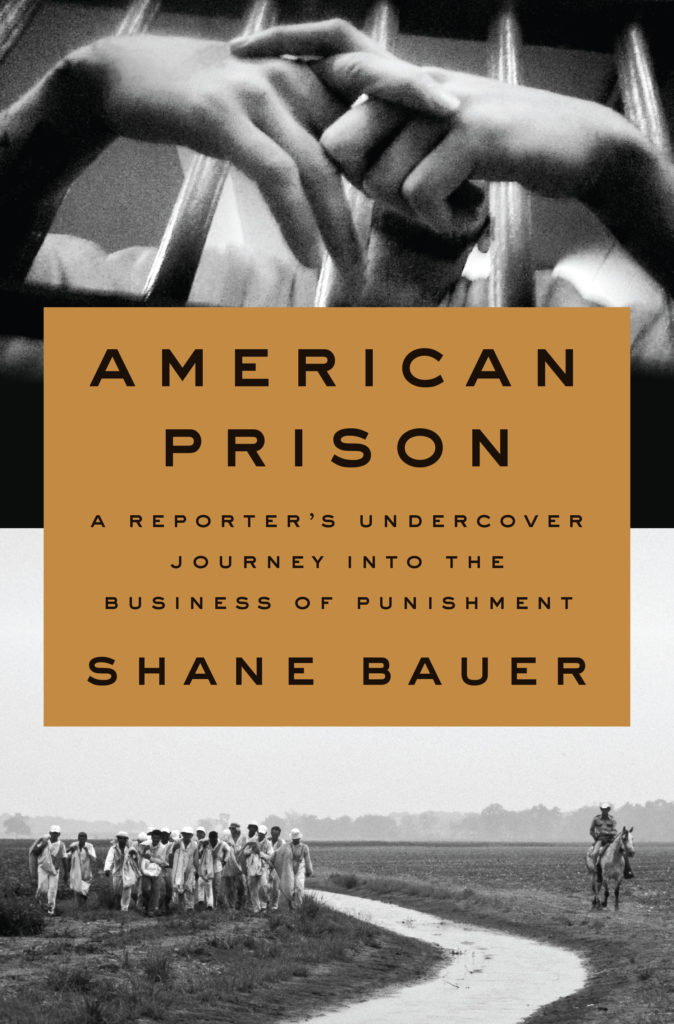
It is hard to know where to start in describing why the privatization of prisons is a terrible idea. The effective abandonment of public responsibility for the fate and welfare of people sentenced to incarceration after being convicted of various crimes—some of whom, in recent years, have been exonerated because of revelations of sloppy or corrupt police work—should speak deeply to the conscience. Apparently, in some legislative circles, however, money counts for more. The lobby for private prisons has made headway over time at both the federal and state levels.
To find out whether and how private prisons are particularly dysfunctional, Shane Bauer, a senior reporter for Mother Jones, went undercover at Winn Prison in Louisiana, an operation of Corrections Corporation of America (CCA) under contract with the state. Not totally undercover, mind you. He used his own name, and had CCA checked him out as he applied for a $9-per-hour job as a corrections officer, they might have wondered why someone with his background would want to work there. But CCA has a problem. Guards working just above minimum wage tend not to last long, and CCA needs bodies in uniforms, so the hiring process appears less than diligent. He was hired easily and worked at Winn for four months before it was time to leave. But more on that later.
For the record: Guards at public prisons in Louisiana, Bauer reports, started at $12.50 an hour. Not a lot, but almost 40 percent more than CCA was paying. Undoubtedly with better benefits.
Let me state at the outset that the resulting book, American Prison (Penguin Press, 2018), which follows his reporting in Mother Jones, is not my normal reading. Regular followers of this blog can figure out what I like to read, for the most part. But I am currently a judge in adult nonfiction for a book awards contest for the Society of Midland Authors, so this and many others arrived at my doorstep, day after day, until the deadline arrived earlier this month. Prisons, correctional policy, and the business of punishment are well outside my areas of expertise, and I am glad of that, but I know a book that demands public attention when I see one. This one will be an eye-opening experience even for some cynics. It will also be heart-wrenching for anyone with a moral core or a sense of human decency.
Before I delve into the details, I must express my admiration for Bauer’s courage in even undertaking this project. For one thing, he had prior experience with prisons—as an inmate. Several years ago, while Bauer was covering the Middle East, he and two friends, Josh Fattal and Sarah Shourd, went hiking and wandered too close to the Iranian border in Kurdish Iraq. All three were arrested. He was taken to the notorious Evin prison, where he spent considerable time in isolation before his eventual release. Shourd was released after about a year in a separate prison. That experience might very justifiably have kept most other people from even considering working in a prison, but Bauer has instead developed a commitment to prison reform. Meanwhile, the CEO of CCA, Damon Hininger, earned $4 million in 2018, according to Bauer, 20 times the salary of the director of the Federal Bureau of Prisons. Just sayin’.
Bauer does not simply relate his experiences at Winn Prison. He has done his homework on the history of making money from prisons and prison labor. He points out that many immigrants to the American colonies were convicts exported from England as indentured servants. Many fortunes in the United States, sometimes vast fortunes, have been built on free (meaning forced) labor from slaves and convicts. But the business of prison labor being used for profit took wing mostly after the Civil War, when the 13th Amendment abolished slavery with one loophole: “except as punishment for a crime.” The opportunity to convict multitudes of African-Americans, as well as a fair number of hapless poor whites, for even minor crimes, opened the door for leasing convict labor. That, in turn, led to horrific conditions as legislatures, especially in the South, sought ways to reduce the costs of penitentiaries by making them profitable—thus, the institution of the prison farm, and later, chain gangs.
That conditions were often horrid on plantations and chain gangs is beyond dispute. Bauer provides ample statistics and documentation including large percentages of deaths in places like Alabama. But individual stories sometimes often serve better to illustrate the moral degradation of prisons for profit. Bauer supplies us with the once infamous case of Martin Tabert, a white, 22-year-old middle-class kid from North Dakota who in 1921 set out to tour the country as a personal adventure. He ran out of money in Florida, between odd jobs along the way, and was arrested and pulled off a train by the sheriff for not having a ticket. Tabert wired his family for money, but before it arrived, he was sold off to the Putnam Lumber Company for three months of work in a turpentine camp. He worked all day in swamp water in “tattered shoes that didn’t fit.” When he had an aching groin and lagged behind other convicts, the “whipping boss” made him lie on the ground for thirty lashes in front of the other convicts. After additional beating and being hit over the head with a strap, he died the following night. The company sent a note to his family saying he died of fever. Not satisfied with the explanation, the family convinced the North Dakota state attorney to go to Florida to investigate. His findings, including the company’s agreement to pay the sheriff $20 for each prisoner he sent to them, produced a major scandal, a lawsuit, and an investigation by the Florida legislature.
All of that highlights the fact that, for decades, some states wavered between episodes of investigation and reform and a desire to limit the prison budget and make the penal system earn money. One might think that, in more enlightened times, we might get past that sort of moral cowardice and come to terms with public responsibilities to provide opportunities for at least the less violent or nonviolent prisoners to make amends, acquire skills, and rehabilitate themselves for participation in what we might hope would become a less dangerous society.
But private prisons, and major problems even at public prisons, persist because America has not yet moved beyond moral indifference and hard-nosed, but short-sighted notions like “throw away the key.” I do not say that to minimize the very real challenges involved in incarcerating felons in the first place. Bauer himself, as he details his experiences as a corrections officer at Winn, confronts much of the moral ambivalence of handling such responsibilities, including the head games and manipulation in which prisoners often engaged at his expense. The moral turmoil of maintaining control of a potentially violent setting is significant, but it also serves to underscore the moral turpitude of trying to do so in a private prison staffed by guards who are earning barely above the minimum wage. That, of course, cuts costs, as does minimizing medical care for inmates and many other short cuts. Bauer plies us with statistics including comparisons of suicide rates between public and private prisons. But again, a personal story highlights a major problem. Bauer tells of one inmate, Damien Coestly, who hangs himself. His suicide is not reported by CCA, he tells us, because he died in the hospital, not at the prison. Never mind that the scenario played out at the prison. Just get the guy out of our prison before he dies on our watch. Good grief.
Now, at some point, you know this whole undercover operation must end. I will not spoil the story for you, nor even share how he got so much information out of the prison on a daily basis. But the epilogue details how and when he decided the time had come to pack up and leave, reporting his resignation by phone from the safety of neighboring Texas. Just read it. It is high drama, making Bauer’s subsequent arrival at the annual shareholders meeting of CCA in Nashville almost anticlimactic, but revealing, nonetheless. If this book does not affect your outlook on the whole subject of incarceration for profit, I swear, there is something wrong with you.
Jim Schwab


